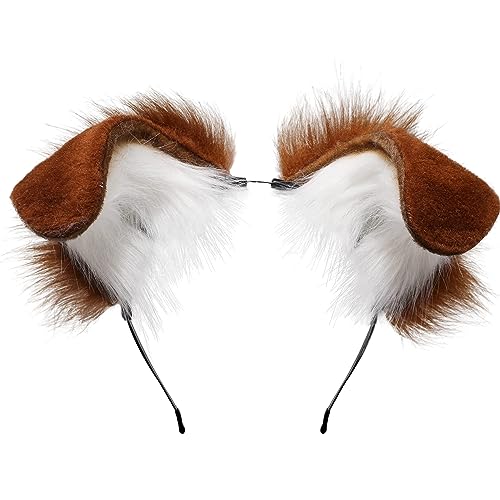




When you notice your furry friend pressing their head against yours, it’s a gesture steeped in affection and trust. This behaviour signifies a deep bond between you and your companion. They’re not merely seeking attention; your pet is communicating their love and comfort, often seeking reassurance or simply enjoying your presence.
In my own experience, this behaviour first caught my attention when my canine would nuzzle against me during quiet moments. Initially, I thought it was merely an odd quirk, but soon I realised it was a form of connection. Each time it happened, I felt a rush of warmth, knowing my four-legged pal saw me as a safe haven. It’s fascinating how animals express their emotions in ways that mirror our own, fostering a unique companionship.
If your pet engages in this forehead touch frequently, it might also indicate they’re feeling anxious or insecure. During stressful situations, they may seek closeness to calm themselves. Observing when this behaviour occurs can provide insight into their emotional state. If it’s during a thunderstorm or a visit to the vet, your presence can act as a soothing balm.
Encouraging this affectionate gesture can be beneficial. Respond with gentle pets and soothing words. This reinforces the bond and assures your furry friend that they are valued. Over time, these moments of contact can enhance your relationship, creating a deeper understanding between you both.
Understanding Canine Body Language
Observe the posture and eye contact of your furry friend. A relaxed stance with soft eyes indicates comfort and trust. If your companion approaches with a wagging tail and a slightly lowered head, this signifies contentment and an invitation for interaction.
Pay attention to the ears. Floppy ears usually denote a friendly state, while ears pinned back can suggest anxiety or fear. This distinction can help you gauge your pet’s feelings in various situations.
Tail movements provide valuable insights too. A tail held high and wagging enthusiastically often means excitement, while a low or tucked tail indicates submission or discomfort. Understanding these signals enhances communication between you and your companion.
Facial expressions are equally telling. A relaxed mouth and slightly open jaw suggest a calm state, whereas a closed mouth with tight lips may signal stress. Learning to read these cues fosters a deeper connection and creates a more harmonious environment.
Engaging in play often brings out the best in body language. Play bows, where your pet lowers the front half of their body while keeping the rear elevated, indicate eagerness to engage. This is a clear sign of a desire for fun and companionship.
Recognising these subtle signs can transform your understanding of your pet’s emotions and needs, strengthening your bond and enhancing your shared experiences.
Significance of Forehead Contact in Canine Behaviour
Engaging in forehead contact signifies trust and affection. This behaviour indicates a strong bond and a sense of safety in the relationship between pet and owner. When your furry companion initiates this gesture, it’s a clear message of comfort and emotional connection.
Emotional Connection
When a pet leans or presses its head against yours, it often seeks reassurance. This act can be a way for them to express their feelings, reinforcing the emotional ties established over time. In my experience, my canine friend would do this after a long day apart, as if to say, “I missed you.” It’s a heartwarming reminder of the loyalty and love they offer.
Social Interaction
Forehead contact can also serve as a social cue. In the wild, canines engage in similar behaviours to communicate with their pack. This action can indicate submission or an invitation to play. I often notice my pet doing this during playtime, enhancing our interactive experiences. The table below outlines various meanings associated with this behaviour:
| Behaviour | Meaning |
|---|---|
| Forehead contact | Trust and affection |
| Leaning | Seeking reassurance |
| Playful nudging | Invitation to interact |
| Gentle head pressing | Comfort-seeking behaviour |
Understanding these nuances enriches the bond shared, allowing for deeper communication and connection with your companion. Experiencing this forehead contact can be one of the most fulfilling aspects of pet ownership, revealing an inner world of emotions and trust.
Building a bond through forehead interactions
The connection formed during those forehead moments is profound. It’s like sharing a secret language that speaks of trust and affection. When I lean down to meet my companion’s gentle gaze, the world around us fades away. It’s just the two of us, united in a moment of pure understanding. I encourage every owner to embrace these interactions wholeheartedly. Take a moment each day to engage in this simple yet meaningful act.
Creating a safe space
To enhance this connection, ensure your pet feels secure. Find a quiet area where distractions are minimal. Approach slowly and softly, allowing your furry friend to initiate contact. This builds confidence and reinforces the bond you share. Pay attention to their comfort level; if they lean in, that’s a positive sign! If they pull away, respect their space and try again later.
Incorporating forehead touches into daily routines
Make forehead interactions a part of your daily habits. Incorporate it into playtime or when cuddling on the couch. Use a gentle tone while offering praise or affection. Over time, these exchanges will deepen the relationship, fostering a sense of companionship. Each forehead touch becomes a reaffirmation of love and connection, paving the way for a fulfilling partnership.
When forehead contact indicates stress or anxiety
Recognising signs of unease is key. If your companion leans their head against yours with a tense posture, it may signify discomfort or anxiety. Pay attention to accompanying behaviours that can help assess their emotional state.
- Ears pinned back: When the ears are flattened, it suggests fear or stress.
- <strong.Tail between legs: A tucked tail often indicates submission or apprehension.
- Whining or whimpering: Vocalisations can reflect distress and should not be ignored.
- Body rigidity: A stiff body posture may signal that your furry friend is feeling threatened.
If you notice these signs, consider creating a calming environment. Here are some strategies:
- Provide a safe space with familiar objects.
- Use soothing music or white noise to mask stressful sounds.
- Engage in gentle, reassuring interactions to help them relax.
- Monitor their environment for potential stressors, such as loud noises or unfamiliar guests.
Building trust is crucial. If forehead contact consistently correlates with signs of anxiety, seek advice from a professional trainer or behaviourist. Understanding the underlying reasons for this behaviour can lead to improved emotional well-being for both of you.
Encouraging positive forehead interactions with your companion
To promote affectionate forehead exchanges with your furry friend, initiate these moments when they are calm and content. Approach them gently, allowing them to see your intentions clearly. Start by lowering your head slightly to their level. This subtle action can signal trust and openness, making them feel secure.
Use a soft tone while engaging with your pet, reinforcing the connection through verbal cues. Positive reinforcement, such as treats or praise, can be effective when they reciprocate the gesture. This not only strengthens the bond but also encourages them to embrace forehead interactions as a positive experience.
Incorporate these moments into your daily routine, perhaps during quiet times like cuddling on the couch or after a leisurely walk. Regular practice can help establish this behaviour as a loving ritual, deepening the trust and understanding between you. Keep an eye on their body language; if they seem relaxed and engaged, you’re on the right track.
To create a safe environment for these interactions, ensure your companion feels secure in their surroundings. Reducing distractions, such as noises or other pets, can make a significant difference. If you’re struggling with behaviours like running the fence, consider exploring how to keep dogs from running the fence to maintain a calm atmosphere.
Ultimately, these forehead exchanges can serve as a foundation for a deeper relationship, enhancing the emotional connection and mutual affection you share. Celebrate these moments and cherish the bond you are nurturing together.






